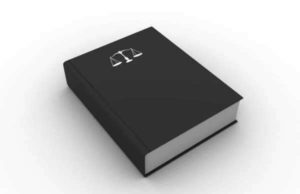 What is the Consumer Protection Act (1987)?
What is the Consumer Protection Act (1987)?
The Consumer Protection Act (1987) was a piece of English legislation that was passed in its titular year of 1987 by the Parliament of the United Kingdom; the Consumer Protection Act (1987) not only provided an adjustment to the preexisting statutory legislation with regard to consumer protection, consumer rights, and consumer law, but also mandated legal statutes and stipulation required of all vendors, suppliers, and manufacturers operating within the United Kingdom’s Commercial Marketplace.
Consumer Protection Act (1987) vs. The Consumer Credit Act (1974)
Prior to the passing of the Consumer Protection Act (1987), the Consumer Protection Act of 1974 was considered to be the foremost piece of legislation with regard to the provision and advocacy of consumer’s rights; however, the Consumer Credit Act of 1974 was considered may many to lack inherent protective measures granted to consumers outside of finance and credit – this act primarily focused on the establishment of terms, regulation, and procedures with regard to credit and financial lending.
Components of the Consumer Protection Act (1987)
The Consumer Protection Act (1987) is comprised of 3 primary sections, which are responsible for the citation of individual commercial processes and procedures; each of the 3 sections of this Act addresses specific undertakings involving the interactions between consumers and suppliers.
The Name of Involved Parties
The Consumer Protection Act (1987) names 2 primary parties undertaking commercial activity within the commercial marketplace within the United Kingdom – the consumer and the supplier. With regard to the statutes expressed with the Consumer Protection Act (1987), a consumer is identified as an individual who engages in the purchase of products and services for private usage in lieu of commercial use; a supplier is identified as the party who provides products and services for consumer purchase.
Section 1 of the Consumer Protection Act (1987)
Section 1 of the Consumer Protection Act (1987) addresses the regulation and administration latent within the instrument of product liability, which is a legal instrument providing for both the financial protection, as well as the safety of consumers. Product liability provides an agreement that products or services will operate and function in the fashion advertised contingent on proper usage.
Section 2 of the Consumer Protection Act (1987)
Section 2 of the Consumer Protection Act (1987) addresses the safety and structural integrity inherent within products and services available within the commercial marketplace. This process serves to both ensure and enforce the viability and integrity of a product or service available for purchase, with regard to the operation, safety, and life span of a product or service.
Section 3 of the Consumer Protection Act (1987)
Section 3 of the Consumer Protection Act (1987) addresses Consumer-based crime, which typically involves the purposeful and intentional misrepresentation of a product or service on the part of a commercial vendor with the expressed intention of deceiving a consumer.





























